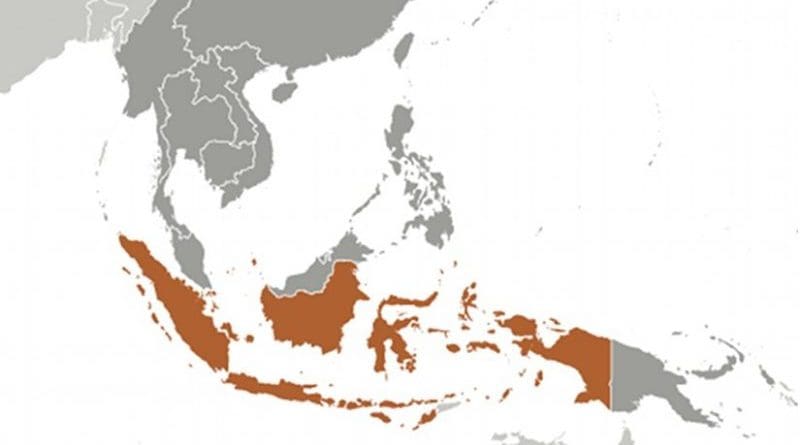Indonesia’s High Speed Rail: A China-Japan Scramble For Influence? – Analysis
By RSIS
China’s outbidding of Japan for the first high-speed rail project in Indonesia reflects Beijing’s eagerness to realise its 21st Century Maritime Silk Road (MSR) initiative. What does this signify for the Asia Pacific Region?
By Emirza Adi Syailendra*
Indonesia took a big and highly significant decision to award China rather than Japan the Jakarta – Bandung high-speed rail project. Jakarta was in dilemma to choose between a trusted old friend (Japan) and a new emerging power (China) as it prepares to start the project in early 2016. The two East Asian giants had presented very competitive deals, with each offering favourable terms to the Indonesian government.
Despite an attractive proposition from Japan, China eventually secured the project with terms that Jakarta found hard to refuse. The clincher for China was its willingness to forego a sovereign guarantee by the Indonesian government.
Courting Jakarta
Japan criticised China’s proposal as unrealistic, especially without government funding and likely to end up making losses as it has to deal with a complex and corrupt bureaucracy in Indonesia. However China showed that it will not hesitate to use its greatest weapon to get what it wants: money and flexibility to adapt to the needs of the local government.
Having completed a feasibility study that took 10 years and cost approximately US$3million, Japan was initially the frontrunner for the Jakarta – Bandung high-speed railway project. As Indonesia’s second largest investor, Tokyo had also been enjoying strong ties with Jakarta. This is especially so considering Japan’s strong commitment in realising its investments in Indonesia.
Japan had also presented the best feasible offer, combining high quality products with a cheap bilateral loan for its financing whereby Indonesia would have to pay only 0.1 percent interest rate. Japanese Prime Minister, Shinzo Abe, has also attempted to offer a last-minute deal by lessening the quantum of the Indonesian sovereign guarantee, shortening the completion time to about five years, including a transfer of knowledge deal and promise to expand maritime cooperation with Indonesia.
Beijing, on its part, had offered Jakarta the bigger investment value of US$5.27 billion in comparison with Tokyo that was around US$4.4 billion, without a government guarantee and purely as a business-to-business transaction. This offer was also followed by other deals such as capacity building and the development of local manufacturing industries that will open massive job opportunities for approximately 40,000 workers.
In other words, the Indonesian government will enjoy the results while China does all the heavy lifting. Not to mention, China also promised to complete the project by 2019 when a national election is to be called by the Indonesian government. That would be a plus for the President Joko “Jokowi” Widodo, who in all likelihood will run for a second term. The three-year timeframe is of course more appealing for Jokowi as it would be an enormous political boost for him.
War of influence
The Indonesian decision aroused deep disappointment in Japan. Akihiro Ota, Japanese Transportation Minister, has said that Japan would re-evaluate its overall investment in Indonesia. Although Indonesia has sought to give Japan a consolation prize by offering other projects, Indonesia’s decision has shown that China’s approach towards developing countries in economic cooperation and investment could prove irresistible.
China’s Indonesia policy is a reflection of its eagerness to realise its One Belt One Road (OBOR) strategy. The policies were attempts by China to open up ‘escape routes’ for itself.from being cornered in the Pacific. China viewed the US as creating the “strategic ring of encirclement” by its rebalancing to the Western Pacific. Most of the US allies in the Pacific such as Japan, South Korea, the Philippines, and Australia have also attempted to shape a perception that China’s rise is a looming threat and would destabilise the region.
However, such a view may not necessarily be shared by countries in Southeast Asia – and especially in Central Asia where US influence is relatively weak. Although countries in Southeast Asia exercise caution towards China’s rise, they will still be very open towards Beijing’s attempts to increase its foothold in the region as long as it provides a certain amount of benefits. China also needs to prove its ability to build, especially to compete with Japan that has vast experience investing in ASEAN.
Tokyo has been trying to counterbalance Beijing’s attempts to enhance and deepen its influence in Asia Pacific. In May 2015, Prime Minister Abe announced his plan to deepen ties with Southeast Asian countries via increased financing of infrastructure projects over five years. Japan has also deepened its maritime ties with the Philippines and Vietnam both of whom oppose China’s growing assertiveness in the South China Sea’s territorial disputes. Japan does not want to accept Chinese primacy and is interested to preserve the political and strategic independence of countries in Southeast Asia by providing an alternative to China.
One of the major obstacles that China faces is the lack of confidence in the region in China’s commitment and in the quality of its products. Conversely, China’s success in this high speed rail project would open up opportunities for other projects in Indonesia and other countries in Southeast Asia.
China’s ability to be flexible to accommodate the needs of a government in power has also become its strongest appeal. But while China’s can-do attitude without conditionalities has position itself favourably, much now depends on whether Beijing can live up to Japan’s reputation for quality and reliability.
*Emirza Adi Syailendra is a Research Analyst with the Indonesia Programme at the S. Rajaratnam of International Studies (RSIS), Nanyang Technological University, Singapore. An earlier version of this article appeared in the People’s Daily.

